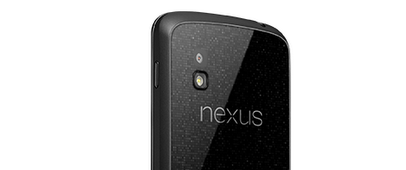While many are still patiently waiting for their pre-ordered Nexus 4 to arrive from Google HQ, those lucky enough to have received theirs have already set about finding out exactly what it’s capable of and developing tweaks to better its performance.
For many, the phone’s ability to record video in Full HD 1080p quality ticks the relevant box, capturing moments in high quality ready to be uploaded online or even played back on a big screen HDTV. However, there will always be a group of people out there who dissect the latest Nexus device from Google and find ways to make it better.
The clever folk over at XDA-Developers have found a very simple way to bump up the video recording quality of the Nexus 4’s rear camera, which can be done with the use of a computer and USB cable. This isn’t necessarily a difficult task, and provided you have a little basic computer knowledge, a touch of determination and the ability to follow instructions, you’ll be able to carry it out.
So how does this neat trick come about? Well, Google has made Android so that some of the camera settings are stored on the device in what’s called plain text, which means there’s no security on the relevant files. Plain text files can be easily edited, and so you’ll need to connect your phone to a PC and browse through the file system.
- Open the /System folder and locate the media_profiles.xml file
- Open the media_profiles.xml file by double clicking – if your PC says it cannot open the file, try installing XML Notepad
- Locate the 1080p recording profile, which should by default have the value ‘12,000’, which sets the bitrate at 12Mbps
- Ensure the open file is set to editable, and change the value to ‘20,000’
- Save and close the file, then disconnect the phone

